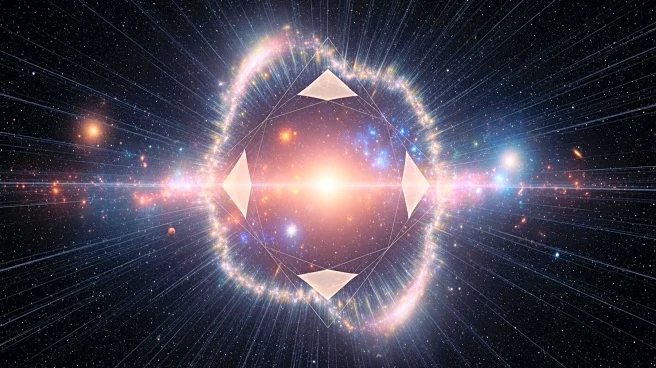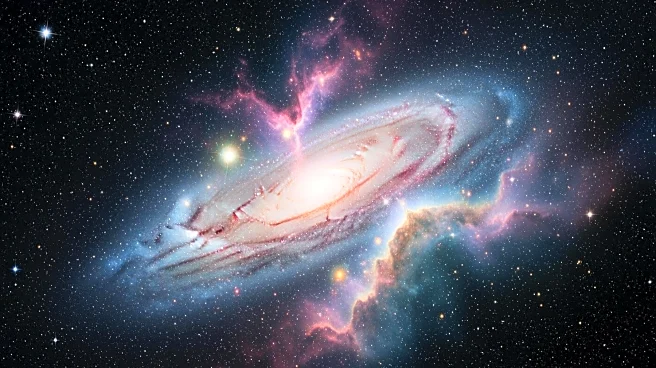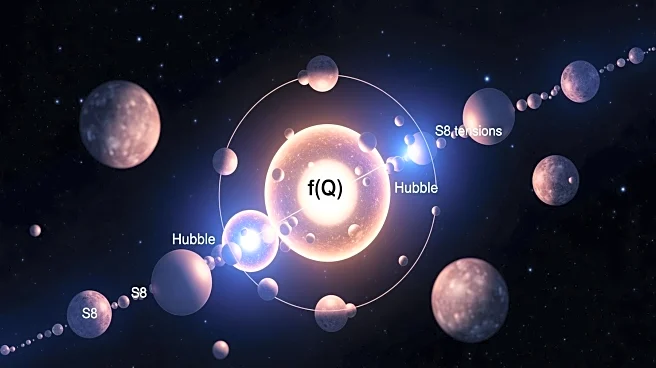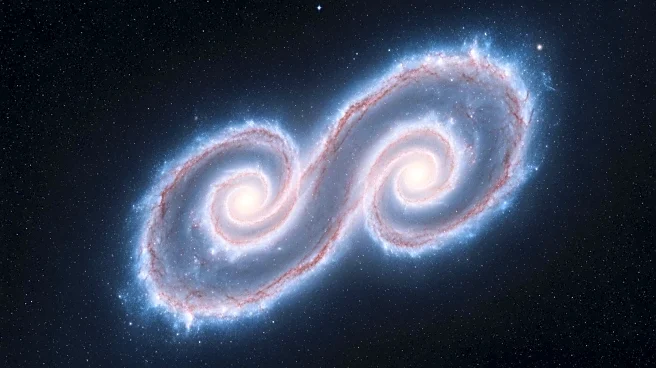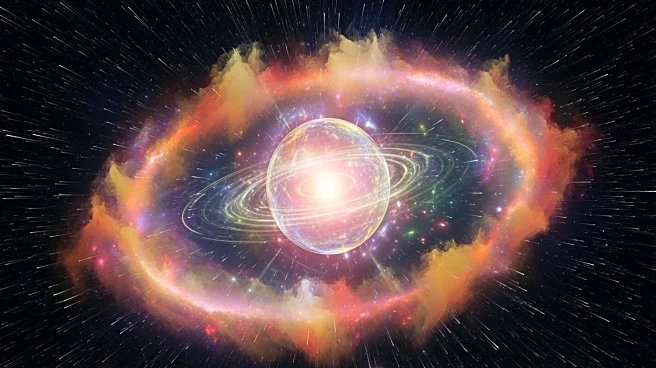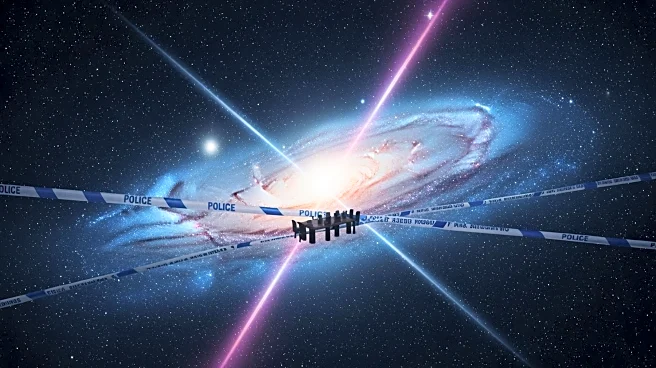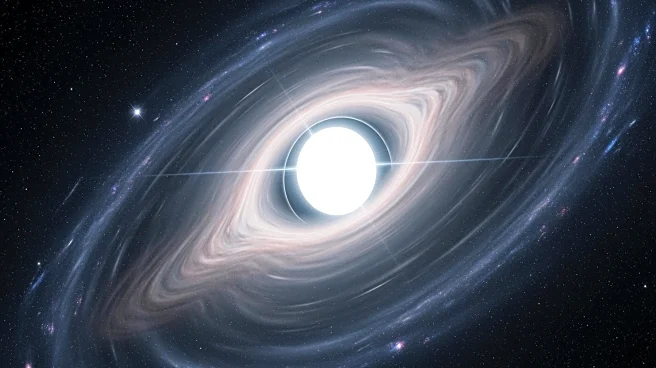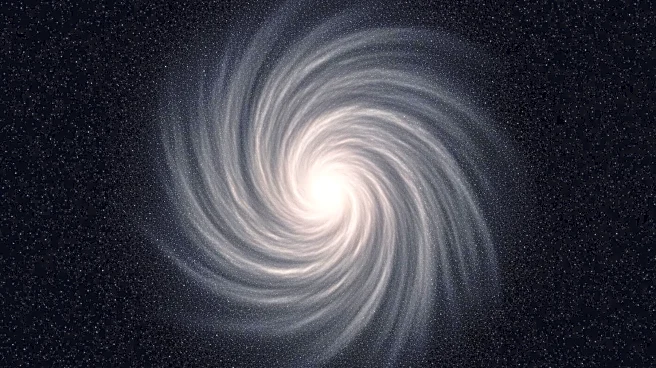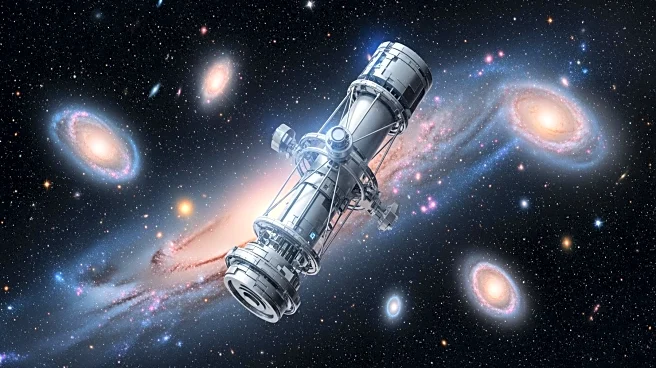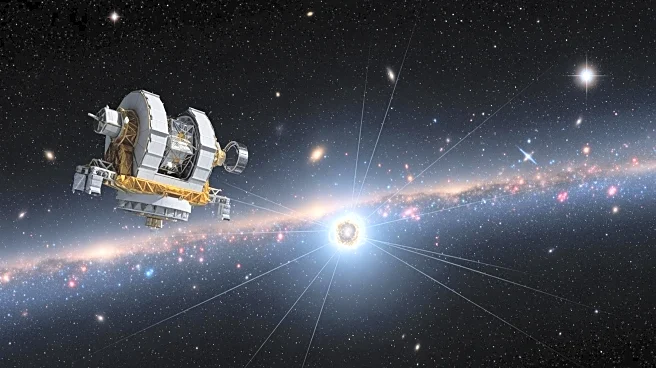What's Happening?
A new study by researchers from the University of Bremen and Transylvanian University of Brașov suggests that the universe's accelerating expansion may be explained by changes in spacetime geometry, without
invoking dark energy. The study introduces Finsler geometry, which allows direction and velocity-dependent measurements, potentially accounting for the observed acceleration. This approach challenges the traditional model that relies on a cosmological constant and offers a testable alternative to current theories.
Why It's Important?
This new theory could revolutionize the understanding of cosmic dynamics by providing an alternative explanation for the universe's expansion. If validated, it may eliminate the need for dark energy, a concept that has puzzled scientists for decades. The implications extend to cosmology, physics, and the fundamental laws governing the universe. It could lead to a paradigm shift in how scientists approach cosmic measurements and the interpretation of astronomical data.
What's Next?
The theory requires rigorous testing against observational data, including supernovae measurements, galaxy clustering, and cosmic microwave background analysis. Researchers will need to develop concrete predictions and compare them with existing models to assess the theory's validity. Success in these tests could lead to widespread acceptance and further exploration of geometry-based explanations in cosmology.
Beyond the Headlines
The proposal to explain cosmic acceleration through geometry rather than dark energy raises philosophical questions about the nature of the universe and the role of human perception in scientific inquiry. It challenges the conventional understanding of spacetime and may inspire new lines of inquiry into the fundamental structure of the cosmos. The study also underscores the importance of interdisciplinary collaboration in advancing scientific knowledge.
